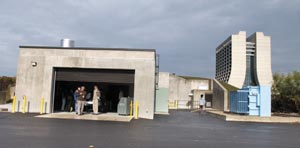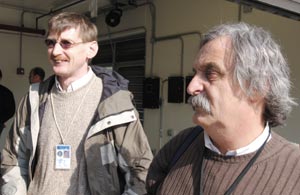
The Neutrino Factory and Muon Collider Collaboration – or Muon Collaboration for short – has finished constructing the MuCool Test Area at Fermilab. Researchers will use the US$1.5 million complex to test the RF cavities and liquid-hydrogen absorbers needed for a muon cooling channel. Spare power units located in Fermilab’s 400 MeV linear accelerator will provide RF power of 201 and 805 MHz, and cryogenic equipment will cool the absorbers to 20 K.
The 130 members of the Muon Collaboration have worked for some six years on the design of very intense beams of muons. To cool muon beams in the transverse direction, the collaboration has designed an alternating series of liquid-hydrogen absorbers and RF cavities. The absorbers reduce the momenta of beam particles in both transverse and longitudinal directions, while the cavities reaccelerate the muons in the longitudinal direction.

By the end of December the group will fill and begin testing the first absorber, which was built by KEK in Japan, and around one year from now the group will receive and test a 201 MHz cavity built by Lawrence Berkeley National Laboratory. In the longer term, the international MICE Collaboration plans to use a muon beam line at the Rutherford Appleton Laboratory in the UK to test the system with 200 MeV/c muons. Success will enable – in about 10 years – a new generation of muon sources with a 1000 times higher muon rate and a 100 times reduction in beam phase space, making neutrino factories possible.
The Muon Collaboration consists primarily of particle and accelerator physicists from laboratories and universities in the US, with additional participation from institutions in Europe and Japan. To secure funding the collaboration is breaking new ground. Traditionally, research and development for accelerators has taken place at national laboratories, with limited participation from university scientists. But tight budgets and ambitious goals have led project leaders in this case to look for more participation and funding from the universities. The collaboration receives money from the US Department of Energy (DOE), the National Science Foundation, the State of Illinois, and some modest funds from Japan. The MuCool buildings at Fermilab are entirely paid for by DOE funds directly provided to the collaboration.





